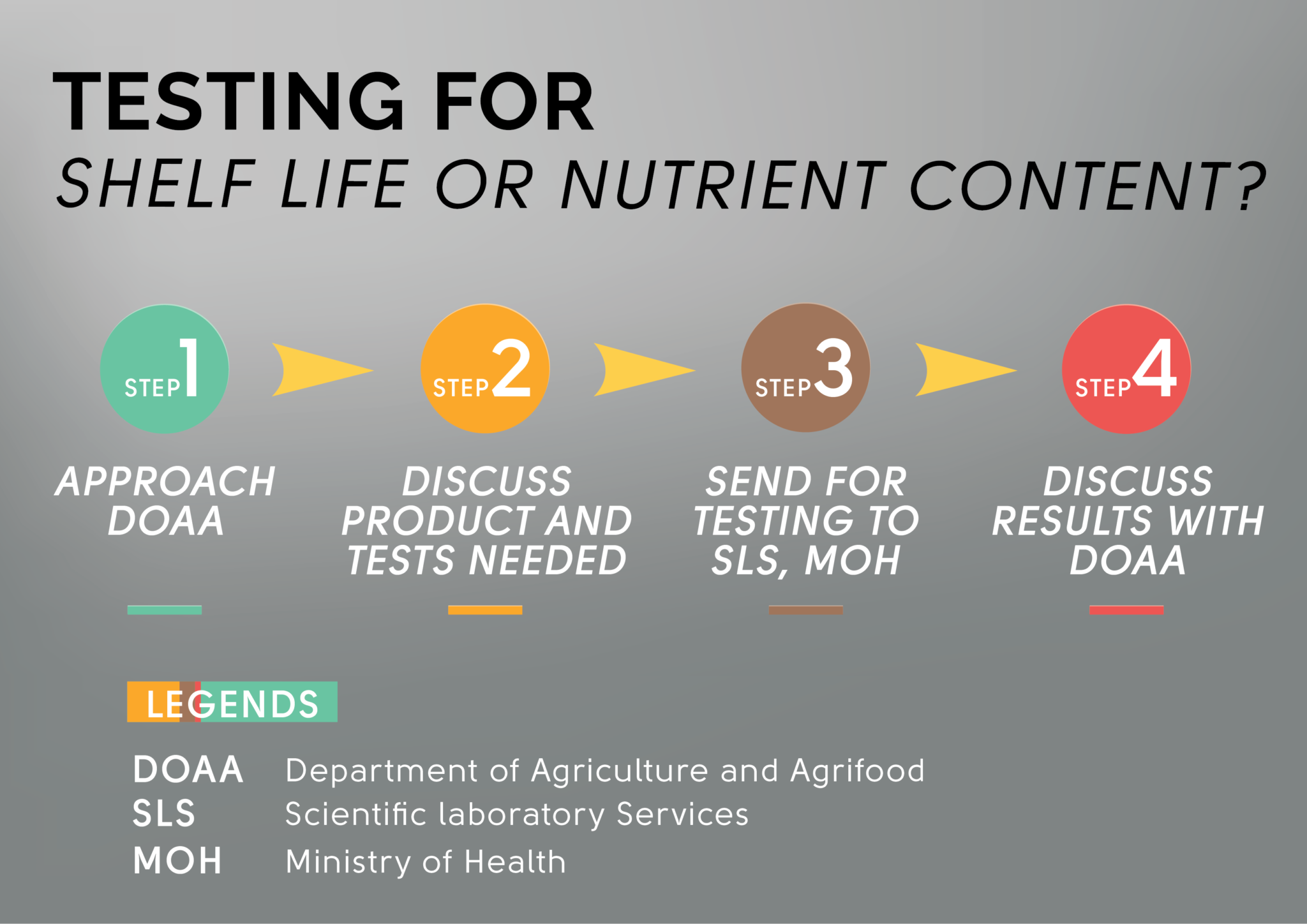Aside from a striking design, few things are more important to your customers than by having your product properly labeled. Nutritional information, list of ingredients, and expiry dates are the fundamentals that carry a product’s credibility and instill consumers’ confidence in a product that they debating to try for the first time.
What information is needed for a food and beverage label?
Officially there are five areas of information that make up a food (and drink) label. In Brunei, these can be found in the Public Health (Food) Act Chapter 182 – Public Health (Food) Regulations.
If you’re selling locally – these are the minimum:
- The name and description of the product
- Product weight
- List of ingredients
- Name and address of producer or distributor
- Expiry, best before, sell by or use by date – if containing any of the following 25 ingredients:
- Cream, reduced cream, light cream, whipped cream and sour cream excluding sterilised canned cream.
- Milk and milk products excluding hard cheese.
- Pasteurised fruit juice and pasteurised fruit juice drink.
- Pasteurised vegetable juice and pasteurised vegetable juice drink.
- Tofu, “tauhu” or “doufu”, a soya beancurd product made of basically soya beans, water and a coagulant, including “egg tofu”, “taukua” or “dougan”, and the soft soya beancurd dessert known as “tauhu” or douhua”, but excluding the oil fried tofu in the form of a pouch known as “taupok”, and the dried beancurd stick.
- Food which is stored or required to be stored at a chilling temperature to maintain or prolong its durable life but excluding raw fruits and vegetables.
- Sauces
- Kaya or egg jam
- Peanut butter
- Vitaminised fruit juice and vitaminised fruit juice drink.
- Vitaminised vegetable juice and vitaminised vegetable juice drink
- Flour and flour products (including biscuits, bread and kuih-muih)
- Eggs product
- Raisins and sultanas
- Chocolate, milk chocolate and chocolate confectioneries in which the characteristic ingredient is chocolate or cocoa, with or without the addition of fruits and nuts.
- Breakfast – cereal with or without fruit and nuts except those in cans.
- Infants’ food.
- Coconut cream, coconut milk, coconut paste, coconut cream powder and desiccated coconut.
- Edible fats and edible oils
- Food additives with a shelf life of less than 18 months.
- Low energy form of any food which requires date marking
- Margarine in non-hermetically sealed containers
- Meat product in non-hermetically sealed containers
- Non-carbonated pasteurised soft drink and non-carbonated U.H.T. soft drink.
- Nutrient supplement or preparation of nutrient supplement sold as food.
How do you test the shelf life of a product?
The first four requirements of a label – producer name, product name (and description), weight and ingredients – can be easily done by the producer themselves. However unless you have specific scientific equipment, testing for shelf life will mean engaging a third party.
In Brunei, the Scientific Laboratory Services (SLS) under the Ministry of Health (MOH) provides this service. However to know which specific scientific tests for shelf life are needed for your product type, it is advised that businesses visit the Department of Agriculture and Agrifood (DOAA), who will provide a consultation at no cost.
Businesses can then bring their product to SLS for testing, and once complete they can engage DOAA again if they have any difficulty interpreting the data or results of the test. Prices for testing for shelf life (depending on ingredients) for each product can be as low as $50 and go up to $325.
However, products with a very short shelf life (less than three days), for example fried noodles or nasi lemak, can just list the date of production instead of submitting products for testing.

What about nutritional information?
The nutritional label (information) is considered separate to the food label – it’s not a requirement to sell locally, but most countries require it for export. SLS also conducts nutritional tests. Here are the prices.

Questions about food labels, shelf life tests and nutritional information can be directed to the DOAA hotline +6737246167 or email raihani.hamid@agriculture.gov.bn, saaimahmanaf.7@gmail.com (8794929), sjjart@gmail.com or nasreyaha89@gmail.com. You can access the full document of the Public Health (Food) Act Chapter 182 – Public Health (Food) Regulations by clicking here.













